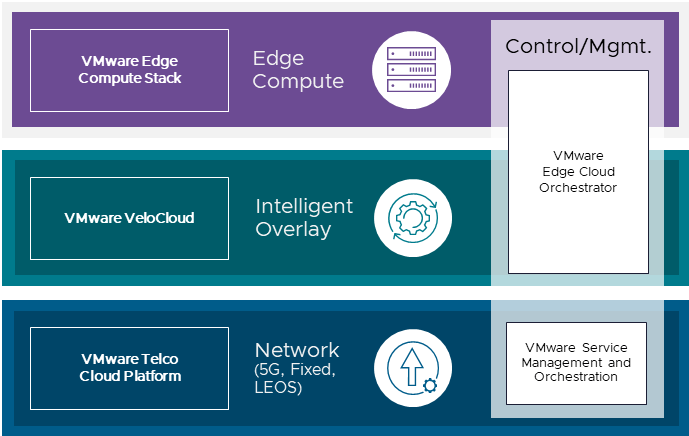
VMware, recently acquired by Broadcom, announced today that we’re returning to the VeloCloud brand for our SD-WAN and SASE solutions. (Click here to read the press release.) The VeloCloud name has a special place in our history as the original name of the company that was founded in 2012 and almost immediately became the SD-WAN market leader. As it turns out, VeloCloud was so popular that even when we officially transitioned to VMware SD-WAN, our partners and customers lovingly stuck with VeloCloud. As they say, the customer is always right! So we’re embracing our roots and bringing back the VeloCloud name you all know and love.
But this name change isn’t simply nostalgia. Now that we are the Software-Defined Edge division of Broadcom, SD-WAN and SASE have critical roles to play. By going “back to the future” we’re building on our heritage as much-awarded, market-leading VeloCloud and VMware, and taking that heralded technology into the future of the software-defined edge as Broadcom.
VeloCloud at the software-defined edge
The diagram below shows our software-defined edge portfolio. I like to compare this to my favorite sandwich cookie, the Oreo. Like the filling between the two essential components of software-defined edge—with VMware Edge Compute Stack on top and VMware Telco Cloud Platform on the bottom—the VeloCloud overlay is the “secret ingredient” that ensures edge workloads have the performance and availability they need from the underlying network.

How does VeloCloud connect the edge compute and telco cloud parts of the portfolio? To put it very simply, edge locations are highly distributed—retail stores, wind turbines, oil and gas platforms, medical centers, cell towers, factories, work-from-anywhere locations, or even a first-responder vehicle that’s on the move. Any set of distributed locations needs a network to tie them together. Edge compute locations need a reliable, secure, fast network to connect components to each other, connect locations, and connect to the cloud. Communications service providers using VMware Telco Cloud Platform provide the WAN circuits—fiber, cellular, private line, and more—that support that connectivity.
VeloCloud intelligent overlay brings the platform together
The center of the diagram, the VeloCloud intelligent overlay “filling”, is a programmable layer that bridges edge compute with the network edge, benefitting both the edge location and the service provider. From its origins, VMware VeloCloud SD-WAN was built to gather data about the underlying network and the applications traversing it and use that data to automatically tune the WAN. Dynamic Multipath Optimization™, a feature that no other SD-WAN provider has, makes the overlay very resilient and optimizes the delivery of real-time applications.
At the modern edge, this means that VeloCloud SD-WAN can be used for much more than simply testing system bandwidth to steer traffic. VeloCloud supports programmable services because it understands the differences among the workloads it carries. For edge locations, this means better reliability and speed. And service providers can use this capability to provide differentiated, monetizable services.
Consider an example that we are demonstrating at Mobile World Congress this week. Imagine a connected ambulance is transporting a trauma patient. The ambulance is equipped with VMware VeloCloud SD-WAN and VMware Edge Compute Stack enabling the processing power and connectivity for a live video stream. Specialists at the hospital can monitor the patient and advise paramedics in real-time as the ambulance drives to the hospital. (This would also work at sea, in a helicopter, or in a very rural area, anywhere a cellular or satellite network signal is available.) Using network programmability, the video stream is maintained without interruption. A specific part of the network bandwidth is dedicated exclusively to this video feed, ensuring it remains stable and clear during the emergency.
This same capability can prioritize a video inferencing system in a retail store that monitors checkouts, for example, or a system that monitors parts on a manufacturing line to ensure that defective equipment doesn’t end up shipped to customers. The combination of VeloCloud SD-WAN and VMware Edge Compute Stack can run workloads such as machine learning and AI at the edge location, without waiting to send data to a cloud or data center for processing.
VMware Edge Cloud Orchestrator
At the beginning of the VeloCloud journey, we developed the VeloCloud Orchestrator as an easy-to-use tool to manage and scale all your VeloCloud instances, whether physical or cloud Edge devices. As we grew the product to encompass the software-defined edge, the Orchestrator grew its capabilities. Now called VMware Edge Cloud Orchestrator (VECO), this brilliant tool can manage an entire edge network from devices to multiple clouds.
Orchestration is very different from traditional IT administration when it comes to edge locations. Devices at the edge such as cameras or PLCs (programmable logic controllers) are generally classified as operational technology, or OT, and managed by teams that are separate from traditional IT teams that manage computers and networks. VMware Edge Cloud Orchestrator is able to deliver pull-based updates to software-enabled edge devices instead of push-based updates. This means that each device automatically checks and updates itself. When it starts, it identifies itself, understands its current condition, and determines which settings and services it should be using. Initially, it sets itself up with basic configurations. After that, it regularly refreshes its settings and services on its own, according to a schedule that can be adjusted. This process happens automatically and doesn’t need manual intervention.
VMware Edge Cloud Orchestrator is a very effective way of ensuring each device stays current and functions well, avoiding a software push that could interrupt the flow of business – and modernizing the way many of these devices are updated now, via manual “sneakernet” where a technician must touch each piece of hardware. Just as VMware VeloCloud SD-WAN is simple to scale to thousands of locations and makes it easy to run thousands of apps, software-defined zero-touch automation with VMware Edge Cloud Orchestrator allows enterprises to easily scale edge devices, deploy edge-native software services, and grow their business.
Securing the software-defined edge
A highly distributed network also opens more potential attack surfaces. Consider the ambulance example: without a secure connection, information about the patient, the ambulance, all the way up to the hospital’s electronic medical records can become vulnerable. On its own, VMware VeloCloud SD-WAN has strong integrated, field-proven, certified security. It includes built-in firewall and encryption capabilities, ensuring secure connectivity between edge compute nodes and the core network. This integrated security protects sensitive data processed at the edge. (Read today’s blog, Enhancements to VMware VeloCloud SD-WAN: New 5G Edge and More Advanced Threat Protection Features.)
We also announced further integrations with Symantec that simplify operations and extend the benefits of both solutions with best-in-class SD-WAN and Security Service Edge (SSE) capabilities. VMware VeloCloud SD-WAN is a crucial component of VMware VeloCloud SASE, secured by Symantec. (Read today’s blog, Broadcom Steps on the Accelerator with VeloCloud SASE.)
VeloCloud SD-WAN and VeloCloud SASE are built on a foundation of zero trust. Data centers, both their physical locations and the information within them, are highly secure. Enterprises need that same protection extended to edge locations that don’t have IT staff. Hardware at edge locations must be right-sized to fit the physical location and the business need, and these small form factors make them vulnerable to theft or tampering. Using zero-trust principles simplifies security management and makes it easy to operationalize from day zero onward.
Assured and optimized from edge to core to cloud
The software-defined edge delivers the compute and networking required to satisfy the needs of edge workloads—wherever they may be—and connects those workloads to the users or the components that rely on them to get business done. Our goal as the Software-Defined Edge Division is to assure and optimize connectivity for edge devices, all the way to the telecommunications networks that provide that connectivity, with built-in intelligence and security.
Let me conclude by saying I am thrilled that our Software-Defined Edge group is one of the newest divisions of Broadcom. For all of us, the acquisition has given us an incredible opportunity to leverage Broadcom’s extensive resources and expertise. With their support, we’re ready to take on edge challenges from compute to the network layer more effectively than ever before.






